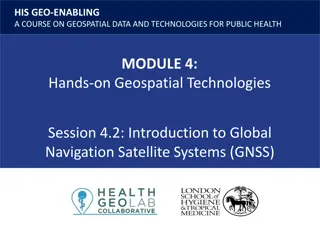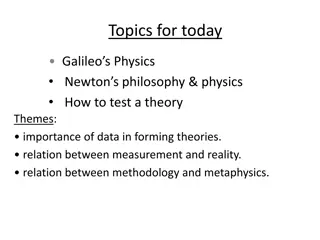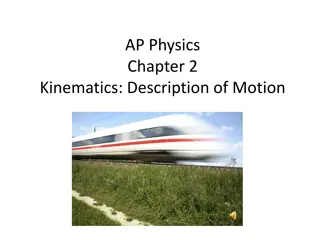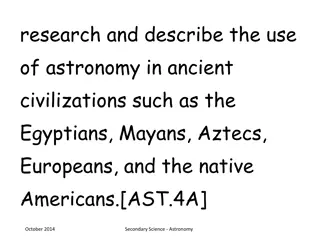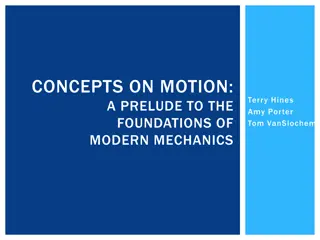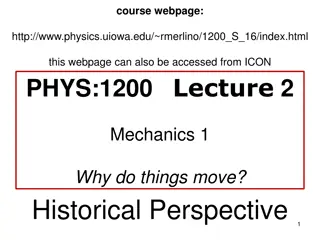
Galileo's Inclined Plane Experiments and Newtonian Physics Insights
Explore Galileo's inclined plane experiments, Newtonian physics principles, and the analysis of gravity. Discover how measurements and data interpretation align with the historical context of Sir Isaac Newton and Galileo Galilei.
Download Presentation

Please find below an Image/Link to download the presentation.
The content on the website is provided AS IS for your information and personal use only. It may not be sold, licensed, or shared on other websites without obtaining consent from the author. If you encounter any issues during the download, it is possible that the publisher has removed the file from their server.
You are allowed to download the files provided on this website for personal or commercial use, subject to the condition that they are used lawfully. All files are the property of their respective owners.
The content on the website is provided AS IS for your information and personal use only. It may not be sold, licensed, or shared on other websites without obtaining consent from the author.
E N D
Presentation Transcript
AME20216 - Lab I A2 Galileo s Inclined Plane 1 AME20216 - Rumbach
A1 Meterstick Measurements 2 AME20216 - Rumbach
Gravity Galileo Galilei 1564 - 1642 Apollo 15 Feather vs. Hammer Inclined Plane 3 AME20216 - Rumbach
A2 Galileos Inclined Plane Galileo empirically found that t x x 4 AME20216 - Rumbach
Interpreting Data Sir Isaac Newton 1642 - 1747 According to Newtonian physics for a ball rolling down an inclined plane: x(t)=1 5 7gsinq t2+v0t + x0 2 5 AME20216 - Rumbach
A2 Galileos Inclined Plane Measure time t to roll distance x. Photogate A Photogate B x 6 AME20216 - Rumbach
A2 Galileos Inclined Plane 7 AME20216 - Rumbach
A2 Extrapolating g x(t)=1 5 7gsinq t2+v0t + x0 2 xfit(t)= p1 t2+ p2 t+ p3 p1=1 5 7gsinq 2 14 g = 5sinqp1 8 AME20216 - Rumbach
A2 Using fit() command = 8.1 14 g = 5sinqp1 Uncertainty in p1 Uncertainty in g 0.5324 m/s2 10.6320 m/s2 0.5114 m/s2 g = 10.2 0.4 m/s2 10.2121 m/s2 0.4904 m/s2 9.7933 m/s2 9 AME20216 - Rumbach


![Read⚡ebook✔[PDF] Io After Galileo: A New View of Jupiter's Volcanic Moon (Sprin](/thumb/21612/read-ebook-pdf-io-after-galileo-a-new-view-of-jupiter-s-volcanic-moon-sprin.jpg)

